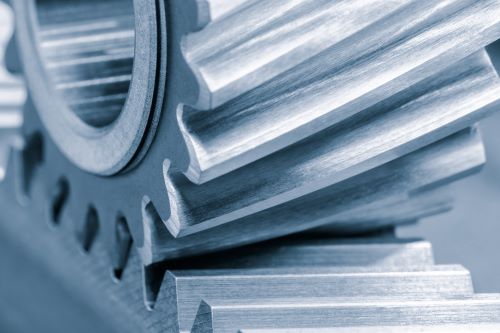All metals can be classified under the standard alloy numbering system as defined by the Society of Automotive Engineers (SAE) and the American Iron and Steel Institute (AISI). Steel metals are further classified by the unified numbering system (UNS). Let’s take a look at two types of steel: No. 2 and No. 3.
No. 2 Steels
The No. 2 designation indicates that nickel has been added to the steel to make it a stronger alloy. The typical formula consists of 8% nickel and .35% carbon, but the amount of nickel and carbon can vary depending on the application of the steel. No. 2 steels are typically used to manufacture:
Gas Cylinders
Steel used to make gas cylinders has a slightly higher amount of nickel in its makeup. The extra nickel gives the steel better resistance against pressure and high temperatures, making it ideal for the production of gas cylinders.
Heavy Forgings
Nickel-steel alloys offer excellent resistance to corrosion and can withstand extreme temperatures. This is why they are primarily used in heavy forgings that will be exposed to weather or utilized in hardwearing applications.
Gears & Shafts
Gears and shafts inside engines need to be tough to handle everyday wear and tear. No. 2 steels are strong enough to withstand the constant rotations required by gears and shafts inside automotive and marine motors.
No. 3 Steels
No. 3 steels are labeled as such to indicate the presence of both nickel and chromium in the chemical formula. The nickel and chromium elements give No. 3 steels exceptional strength, allowing for superior resistance to:
Oxidation
The chromium addition in No. 3 steels increases the oxygen diffusion rate, helping the material to effectively resist rusting. This is why No. 3 steels are often used in marine and other applications where heavy moisture is present.
Heat & Electricity
When used in electrical applications, No. 3 steels will typically contain a high amount of chromium—upwards of 20%. This is because chromium offers impressive resistance to electrical currents and high heat, making this type of steel the ideal choice for wire drawing.
Wear & Tear
Nickel-chromium alloys have a high degree of hardness that makes them perfect for any application where they will be exposed to constant friction and rotation. No. 3 steels hold up better than other types of metal, such as cobalt-chrome alloys, in such applications.
Differentiating Between No. 2 & No. 3 Steels
The easiest difference to remember between No. 2 and No. 3 steels is that the former contains nickel and the latter contains both nickel and chromium. Both alloys are super durable, with No. 3 coming out on top as far as sheer strength. And they both have numerous applications across a range of industries.
Fabricating Steel
Professional steel fabricators need the right equipment to get ahead in the industry, which is why they turn to Machitech. We manufacture heavy-duty CNC plasma cutting tables for custom fabrication, which include free and unlimited support for life. Contact Machitech today to learn more.
 English
English  Français
Français 
